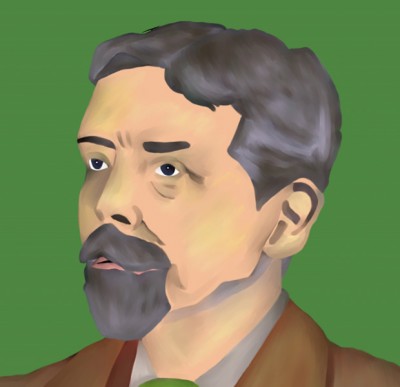 George du Maurier (1834-1896) was born in Paris and grew up in France, Belgium and England. His English-born father, a scientist and amateur inventor, was the son of French emigrés who had fled the Revolution. His mother was the daughter of Mary-Anne Clarke, a former mistress of the Duke of York.
George du Maurier (1834-1896) was born in Paris and grew up in France, Belgium and England. His English-born father, a scientist and amateur inventor, was the son of French emigrés who had fled the Revolution. His mother was the daughter of Mary-Anne Clarke, a former mistress of the Duke of York.
Du Maurier was educated at school in Paris and studied chemistry at University College, London, after which he gained employment as an analytical chemist and mining engineer.
In 1856, following the death of his father, du Maurier returned to Paris to study painting. He lived in the bohemian Latin Quarter with fellow students James Whistler and Edward Poynter, an experience which would later provide the background to his novel Trilby.
In 1859, du Maurier lost the sight in his left eye. Despite this setback, he moved to London and began to make his name as an illustrator for periodicals like Once a Week and the Cornhill Magazine.
Du Maurier married in 1863 and shortly afterwards became a full-time cartoonist for the satirical magazine Punch. Over the next twenty years he also provided book illustrations for many leading authors of the day, including Thomas Hardy, George Meredith and Henry James, who became a close friend.
With James’ encouragement du Maurier wrote and illustrated his own novel, Peter Ibbetson (1891), which drew heavily on his Parisian childhood. This was followed by a second novel, Trilby (1894), which caused a worldwide sensation and was successfully adapted for the stage. In 1896 du Maurier completed his third and final book, The Martian (1897), but died of heart failure before it was published.
He was the grandfather of the author Daphne du Maurier (1907-1989) and the father of Sylvia Llewelyn Davies (Kate Winslet in Finding Neverland), whose children inspired J. M. Barrie’s Peter Pan (1904).
